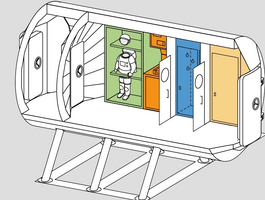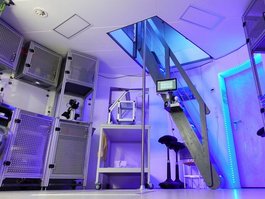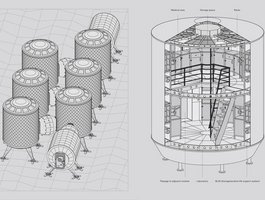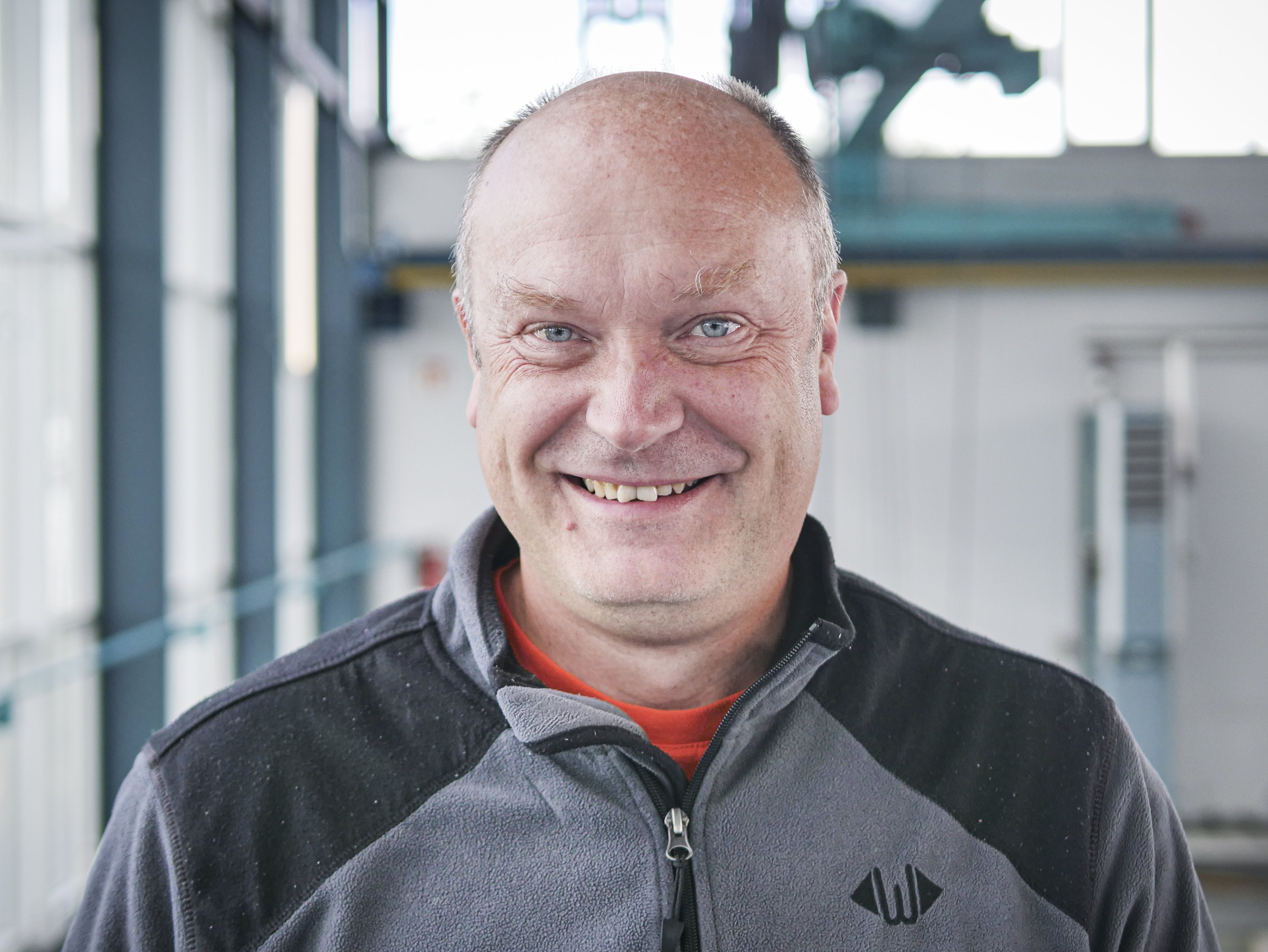MaMBA – Moon and Mars Base Analog
ABOUT OUR RESEARCH
Humankind is once again on its way deeper into space to explore distant celestial bodies and planets. We have heavy-lift rockets that are powerful enough to carry a crew beyond the Earth's orbit and international space agencies such as ESA or NASA are pushing to land humans on the Moon within the next 20 years, and even later on Mars.
However, the challenges for such a tricky undertaking do not lie solely with the transportation systems. What interests us most about these plans is what happens once humans have arrived on the Moon or Mars? What are our concepts for a long-term stay: How can we survive, live and work there? The basis for all this are so-called habitats. Today, there exist more than one dozen simulation habitats in the world, however, they have all been built for terrestrial environments. This ultimately led to the idea behind project MaMBA: Its objective is to create a station that allows humans to survive on the Moon or Mars.
Habitats for humans on Mars
On Mars, the environment outside the habitat is lethal to humans – a crew puts their lives in the hands of their "new home", and their survival depends on the functionality of its technical systems at all levels. From a scientist's point of view, this is indeed a huge interdisciplinary challenge.
Christiane Heinicke gives a comprehensive overview of the current state of research and an introduction to the MaMBA project which is her approach to address these complex questions. The MaMBA concept consists of six modules, each fulfilling 1-2 functions, and airlocks. The lab module is the scientific core of the station and a full-size module mock-up has already been constructed and tested at ZARM, with complete lab equipment, exactly as it could be used on the Moon or Mars. The mock-up is open to international partners for simulations.
Our fields of research
- habitats for long-term human space exploration missions
- airlocks concepts and their adaption to the goals of planetary protection
- equipping an extraterrestrial laboratory
- integration of life support systems into habitats
CONTACT

The living habitat
In a hostile environment, as found on the Moon or Mars, an exploration crew must entrust their lives to the life support system of the habitat. This life support system will be bioregenerative, with photosynthetic organisms producing the oxygen needed by the crew. Networks of sensors monitor both life support system and crew, and the crew interacts with the life support system through the sensors. Together, these three components form the “living habitat" – one of seven key projects within the "Humans on Mars Initative" at the University of Bremen that investigates pathways toward a sustainable human exploration of Mars.

An airlock concept to reduce contamination risks during the human exploration of Mars
Protecting the Martian environment from contamination with terrestrial microbes is generally seen as essential to the scientific exploration of Mars, especially when it comes to the search for indigenous life. However, while companies and space agencies aim at getting to Mars within ambitious timelines, the state-of-the-art planetary protection measures are only applicable to uncrewed spacecraft. In our view, the one nominal mission activity that is most prone to introducing terrestrial microbes into the Martian environment is when humans leave their habitat to explore the Martian surface, if one were to use state-of-the-art airlocks. We therefore propose to adapt airlocks specifically to the goals of planetary protection.

Equipping an extraterrestrial laboratory: Overview of open research questions and recommended instrumentation for the Moon
In the past, most spaceflight missions have been implemented by adding scientific instruments after most of the engineering work is already finished. This has often limited scientific studies to relatively scattered, insular topics. However, if prepared appropriately, a research laboratory on either the Moon or Mars can help address scientific questions thoroughly and at a fundamental level. In this project we review the main scientific questions relating to the Moon that are still open and develop an overview of the instrumentation that would be necessary for a human astronaut inside a lunar laboratory to help answer these questions.

The MaMBA-concept for an extraterrestrial base and its first module mock-up
The challenge with habitats is not only a technological one: architecture and engineering should be brought together to create an environment in which a crew can perform optimally. With missions to Mars in mind, crew mental health becomes a design driver equally important to the support of physiological functions. We here suggest a habitat concept, MaMBA (short for Moon and Mars Base Analog), which combines these two requirements. Further, we aim to create a habitat which can serve as a test platform (for technologies, operations, and procedures) and whose usability is continually validated through iterative testing with human inhabitants. The habitat is open to international partners for simulations.



The list below shows the latest 25 publications of this research group. For the complete, searchable list of ZARM publications, please click more



